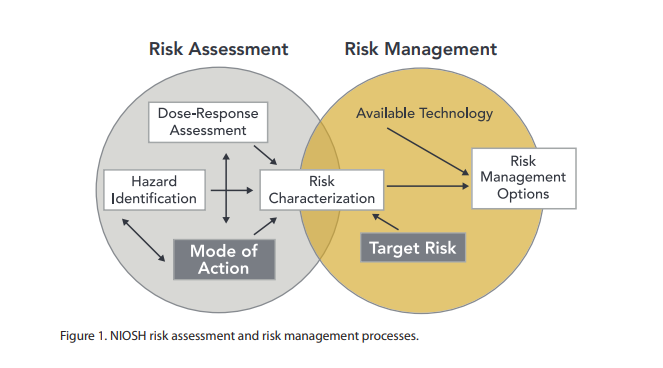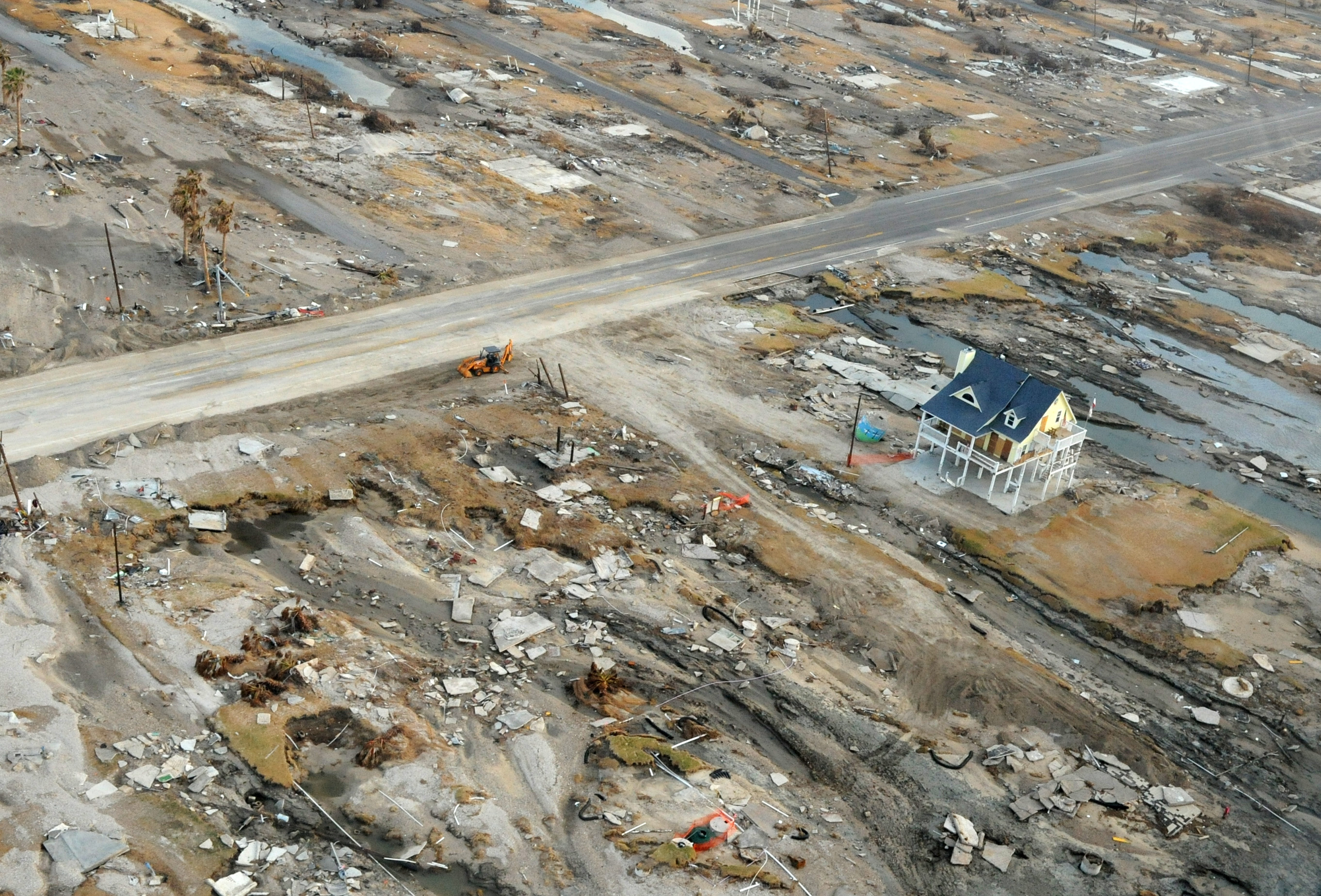|
Probabilistic Risk Assessment
Probabilistic risk assessment (PRA) is a systematic and comprehensive methodology to evaluate risks associated with a complex engineered technological entity (such as an airliner or a nuclear power plant) or the effects of stressors on the environment (probabilistic environmental risk assessment, or PERA). Risk in a PRA is defined as a feasible detrimental outcome of an activity or action. In a PRA, risk is characterized by two quantities: #the magnitude (severity) of the possible adverse consequence(s), and #the likelihood (probability) of occurrence of each consequence. Consequences are expressed numerically (e.g., the number of people potentially hurt or killed) and their likelihoods of occurrence are expressed as probabilities or frequencies (i.e., the number of occurrences or the probability of occurrence per unit time). The total risk is the expected loss: the sum of the products of the consequences multiplied by their probabilities. The spectrum of risks across classes ... [...More Info...] [...Related Items...] OR: [Wikipedia] [Google] [Baidu] |
Risk
In simple terms, risk is the possibility of something bad happening. Risk involves uncertainty about the effects/implications of an activity with respect to something that humans value (such as health, well-being, wealth, property or the environment), often focusing on negative, undesirable consequences. Many different definitions have been proposed. One ISO standard, international standard definition of risk is the "effect of uncertainty on objectives". The understanding of risk, the methods of assessment and management, the descriptions of risk and even the definitions of risk differ in different practice areas (business, economics, Environmental science, environment, finance, information technology, health, insurance, safety, security, security, privacy, etc). This article provides links to more detailed articles on these areas. The international standard for risk management, ISO 31000, provides principles and general guidelines on managing risks faced by organizations. Defi ... [...More Info...] [...Related Items...] OR: [Wikipedia] [Google] [Baidu] |
Statistical Dispersion
In statistics, dispersion (also called variability, scatter, or spread) is the extent to which a distribution is stretched or squeezed. Common examples of measures of statistical dispersion are the variance, standard deviation, and interquartile range. For instance, when the variance of data in a set is large, the data is widely scattered. On the other hand, when the variance is small, the data in the set is clustered. Dispersion is contrasted with location or central tendency, and together they are the most used properties of distributions. Measures of statistical dispersion A measure of statistical dispersion is a nonnegative real number that is zero if all the data are the same and increases as the data become more diverse. Most measures of dispersion have the same units as the quantity being measured. In other words, if the measurements are in metres or seconds, so is the measure of dispersion. Examples of dispersion measures include: * Standard deviation * Interquartile ... [...More Info...] [...Related Items...] OR: [Wikipedia] [Google] [Baidu] |
Risk Matrix
A risk matrix is a matrix that is used during risk assessment to define the level of risk by considering the category of likelihood (often confused with one of its possible quantitative metrics, i.e. the probability) against the category of consequence severity. This is a simple mechanism to increase visibility of risks and assist management decision making. Definitions Risk is the lack of certainty about the outcome of making a particular choice. Statistically, the level of downside risk can be calculated as the product of the probability that harm occurs (e.g., that an accident happens) multiplied by the severity of that harm (i.e., the average amount of harm or more conservatively the maximum credible amount of harm). In practice, the risk matrix is a useful approach where either the probability or the harm severity cannot be estimated with accuracy and precision. Although standard risk matrices exist in certain contexts (e.g. US DoD, NASA, ISO),International Organization fo ... [...More Info...] [...Related Items...] OR: [Wikipedia] [Google] [Baidu] |
Risk Assessment
Risk assessment is a process for identifying hazards, potential (future) events which may negatively impact on individuals, assets, and/or the environment because of those hazards, their likelihood and consequences, and actions which can mitigate these effects. The output from such a process may also be called a risk assessment. Hazard analysis forms the first stage of a risk assessment process. Judgments "on the tolerability of the risk on the basis of a risk analysis" (i.e. risk evaluation) also form part of the process. The results of a risk assessment process may be expressed in a quantitative or qualitative fashion. Risk assessment forms a key part of a broader risk management strategy to help reduce any potential risk-related consequences. Categories Individual risk assessment Risk assessments can be undertaken in individual cases, including in patient and physician interactions. In the narrow sense chemical risk assessment is the assessment of a health risk in response ... [...More Info...] [...Related Items...] OR: [Wikipedia] [Google] [Baidu] |
Reference Class Forecasting
Reference class forecasting or comparison class forecasting is a method of predicting the future by looking at similar past situations and their outcomes. The theories behind reference class forecasting were developed by Daniel Kahneman and Amos Tversky. The theoretical work helped Kahneman win the Nobel Prize in Economics. Reference class forecasting is so named as it predicts the outcome of a planned action based on actual outcomes in a reference class of similar actions to that being forecast. Discussion of which reference class to use when forecasting a given situation is known as the reference class problem. Overview Kahneman and Tversky Decision Research Technical Report PTR-1042-77-6. In found that human judgment is generally optimistic due to overconfidence and insufficient consideration of distributional information about outcomes. People tend to underestimate the costs, completion times, and risks of planned actions, whereas they tend to overestimate the benefi ... [...More Info...] [...Related Items...] OR: [Wikipedia] [Google] [Baidu] |
Cost Risk
Cost is the value of money that has been used up to produce something or deliver a service, and hence is not available for use anymore. In business, the cost may be one of acquisition, in which case the amount of money expended to acquire it is counted as cost. In this case, money is the input that is gone in order to acquire the thing. This acquisition cost may be the sum of the cost of production as incurred by the original producer, and further costs of transaction as incurred by the acquirer over and above the price paid to the producer. Usually, the price also includes a mark-up for profit over the cost of production. More generalized in the field of economics, cost is a metric that is totaling up as a result of a process or as a differential for the result of a decision. Hence cost is the metric used in the standard modeling paradigm applied to economic processes. Costs (pl.) are often further described based on their timing or their applicability. Types of account ... [...More Info...] [...Related Items...] OR: [Wikipedia] [Google] [Baidu] |
Benefit Risk
When the actual benefits of a venture are less than the projected or estimated benefits, the result is known as a benefit shortfall. If, for instance, a company is launching a new product or service and projected sales are 40 million dollars per year, whereas actual annual sales turn out to be only 30 million dollars, then the benefit shortfall is said to be 25 percent. Sometimes the terms "demand shortfall" or "revenue shortfall" are used instead of benefit shortfall; see volume risk. Public and private enterprises alike fall victim to benefit shortfalls. Prudent planning of new ventures will include the risk of benefit shortfalls in risk assessment and risk management. The discipline of benefits realisation management Benefits realization management (BRM), also benefits management, benefits realisation or project benefits management, is a project management methodology, often visual, addressing how time and resources are invested into change management, making d ... seeks t ... [...More Info...] [...Related Items...] OR: [Wikipedia] [Google] [Baidu] |
Economic Sanctions
Economic sanctions or embargoes are Commerce, commercial and Finance, financial penalties applied by states or institutions against states, groups, or individuals. Economic sanctions are a form of Coercion (international relations), coercion that attempts to get an actor to change its behavior through disruption in economic exchange. Sanctions can be intended to Compellence, compel (an attempt to change an actor's behavior) or Deterrence theory, deter (an attempt to stop an actor from certain actions).Haidar, J.I., 2017Sanctions and Exports Deflection: Evidence from Iran" Economic Policy (Oxford University Press), April 2017, Vol. 32(90), pp. 319–355. Sanctions can target an entire country or they can be more narrowly targeted at individuals or groups; this latter form of sanctions are sometimes called "smart sanctions". Prominent forms of economic sanctions include trade barriers, Asset freezing, asset freezes, travel bans, arms embargoes, and restrictions on financial transac ... [...More Info...] [...Related Items...] OR: [Wikipedia] [Google] [Baidu] |
Conditioning (probability)
Beliefs depend on the available information. This idea is formalized in probability theory by conditioning. Conditional probabilities, conditional expectations, and conditional probability distributions are treated on three levels: discrete probabilities, probability density functions, and measure theory. Conditioning leads to a non-random result if the condition is completely specified; otherwise, if the condition is left random, the result of conditioning is also random. Conditioning on the discrete level Example: A fair coin is tossed 10 times; the random variable ''X'' is the number of heads in these 10 tosses, and ''Y'' is the number of heads in the first 3 tosses. In spite of the fact that ''Y'' emerges before ''X'' it may happen that someone knows ''X'' but not ''Y''. Conditional probability Given that ''X'' = 1, the conditional probability of the event ''Y'' = 0 is : \mathbb (Y=0, X=1) = \frac = 0.7 More generally, : \begin \mathbb (Y=0, X=x) &= \frac = \frac && ... [...More Info...] [...Related Items...] OR: [Wikipedia] [Google] [Baidu] |
Natural Hazard
A natural disaster is the very harmful impact on a society or community brought by natural phenomenon or hazard. Some examples of natural hazards include avalanches, droughts, earthquakes, floods, heat waves, landslides - including submarine landslides, tropical cyclones, volcanic activity and wildfires. Additional natural hazards include blizzards, dust storms, firestorms, hails, ice storms, sinkholes, thunderstorms, tornadoes and tsunamis. A natural disaster can cause loss of life or damage property. It typically causes economic damage. How bad the damage is depends on how well people are prepared for disasters and how strong the buildings, roads, and other structures are. Scholars have argued the term "natural disaster" is unsuitable and should be abandoned. Instead, the simpler term ''disaster'' could be used. At the same time, the type of hazard would be specified. A disaster happens when a natural or human-made hazard impacts a vulnerable community. It r ... [...More Info...] [...Related Items...] OR: [Wikipedia] [Google] [Baidu] |
Robust Control
In control theory, robust control is an approach to controller design that explicitly deals with uncertainty. Robust control methods are designed to function properly provided that uncertain parameters or disturbances are found within some (typically compact) set. Robust methods aim to achieve robust performance and/or stability in the presence of bounded modelling errors. The early methods of Bode and others were fairly robust; the state-space methods invented in the 1960s and 1970s were sometimes found to lack robustness, prompting research to improve them. This was the start of the theory of robust control, which took shape in the 1980s and 1990s and is still active today. In contrast with an adaptive control policy, a robust control policy is static, rather than adapting to measurements of variations, the controller is designed to work assuming that certain variables will be unknown but bounded. (Section 1.5) In German; an English version is also available Criteria for robust ... [...More Info...] [...Related Items...] OR: [Wikipedia] [Google] [Baidu] |
Resilience (engineering And Construction)
In the fields of engineering and construction, resilience is the ability to absorb or avoid damage without suffering complete failure and is an objective of design, maintenance and restoration for buildings and infrastructure, as well as communities. A more comprehensive definition is that it is the ability to respond, absorb, and adapt to, as well as recover in a disruptive event. A resilient structure/system/community is expected to be able to resist to an extreme event with minimal damages and functionality disruptions during the event; after the event, it should be able to rapidly recovery its functionality similar to or even better than the pre-event level. The concept of resilience originated from engineering and then gradually applied to other fields. It is related to that of vulnerability. Both terms are specific to the event perturbation, meaning that a system/infrastructure/community may be more vulnerable or less resilient to one event than another one. However, they a ... [...More Info...] [...Related Items...] OR: [Wikipedia] [Google] [Baidu] |




